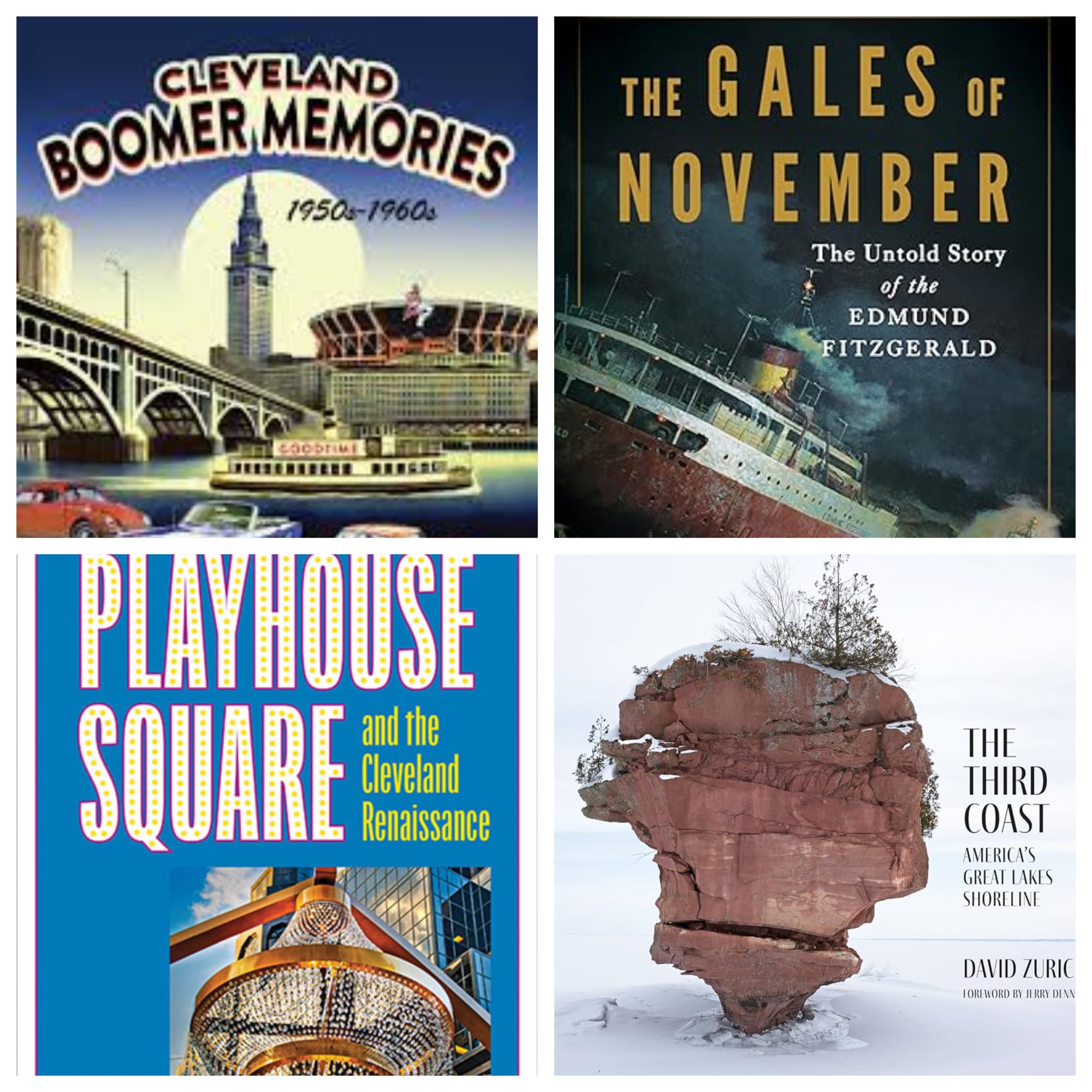Cleveland, Ohio Thinking about books, especially ones with a distinctly local focus, is always a good idea. A late holiday? Books for the beach. Birthdays? ideal presents. Hygge and the holidays are approaching? There is nothing better than cuddling up with one or more of them.
Stories by
Peter Chakerian
-
Raspberries tribute album, expanded book cement Cleveland band s power-pop legacy
-
Jeffrey Cole joins Cleveland Museum of Art as honorary trustee
-
5 things to know about the prestigious Cleveland Arts Prize and its impressive 2025 winners
-
Hungry for nostalgia? Here s a dive into the Classic CLE Eats & Drinks mail bag
In light of this, we’re providing you with an overview of a few recent books that readers of Cleveland.com might find interesting:
America’s Great Lakes Shoreline: The Third Coast
Written by David Zurick
Are you familiar with the Great Lakes? Rethink your thought.
Zurick’s full-color photo tour takes you through four galleries arranged according to season and lake. The harsh winters of Lake Superior, the springtime explosion of Lake Michigan, the summertime glow of Lakes Erie and Ontario, and the fall colors of Lake Huron. He even included a gallery devoted to the rivers and straits that connect the entire system.
This beautiful ode to America’s inland seas begins with an evocative forward by award-winning nature writer Jerry Dennis.
The November Gales: The Untold Edmund Fitzgerald Story
By Bacon, John U.
Bacon is the official account of the most notorious shipwreck on the Great Lakes, some fifty years after the Mighty Fitz went down. No ship more epitomized American industrial might than the 729-foot Edmund Fitzgerald at a time when the area was on par with Silicon Valley in terms of global economic clout.
This is why the country was taken aback by its unexpected defeat in 1975.
Bacon, who is already well-known for The Great Halifax Explosion, reveals the ship, storm, and changing fortunes of the Great Lakes.Settle in with this book and grab an Eddie Fitz.
On October 7, the book will be published.
Memories of the Cleveland Boomer
By Ellen N. Jacob and Howard A. Zuckerman
Enter a time machine that transports you to Cleveland in the middle of the 20th century, complete with Mawby’s, Barnaby, The Schvitz, Royal Castle, Euclid Beach Park, and transistor radios on steamy summer evenings at Edgewater. The book is jam-packed with famous sites, old TV shows, local advertisements, styles, cuisines, and trends that influenced a generation, according to Zuckerman and Jacob.
Even better, each edition includes a printable, interactive photo book, and the earnings benefit the Alzheimer’s Association and the International Holocaust Remembrance Alliance. It is a purposeful form of nostalgia.
The Beatles Meet the Westport Jets: A Baby Boomer Journey
Written by Peter Jedick
Consider With a quest to see the Beatles, The Sandlot is set in Cleveland in 1964. That’s the spirit of Jedick’s lighthearted adventure in the vein of Tom Sawyer and Huckleberry Finn, in which four West Park Pony League ballplayers pursue the impossibly long-held goal of meeting the Fab Four. A user on Goodreads actually came up with that Sandlot analogy before us, so we’re not the only ones who thought of it!(Smalls, you’re killing me.)
It’s boomer nostalgia with a speculative twist, full of local monuments and authentic 60s flavor. This is perfect for you if you enjoyed Dave Eifert’s first novel, The Cleveland Curse, or if you grew up sneaking into baseball fields and concerts.
FYMI: The Cleveland Renaissance and Playhouse Square
Written by John Vacha
Playhouse Square was on the verge of being demolished before it became the focal point of Cleveland’s artistic landscape. Arguably the foremost expert on the topic, Vacha describes how a group of Clevelanders banded together to save the theaters in the 1970s, starting a domino effect that contributed to the city’s overall renaissance.
Had the Hippodrome been as fortunate.
This book, which is a little over a year old, is the definitive narrative of how grassroots perseverance turned a dying neighborhood into one of the most prominent theatrical hubs in the world. Vacha’s guest column about storytelling can be found here, if you need further evidence.
Was a magazine found in a barbershop the key to saving Playhouse Square? Vacha, John






